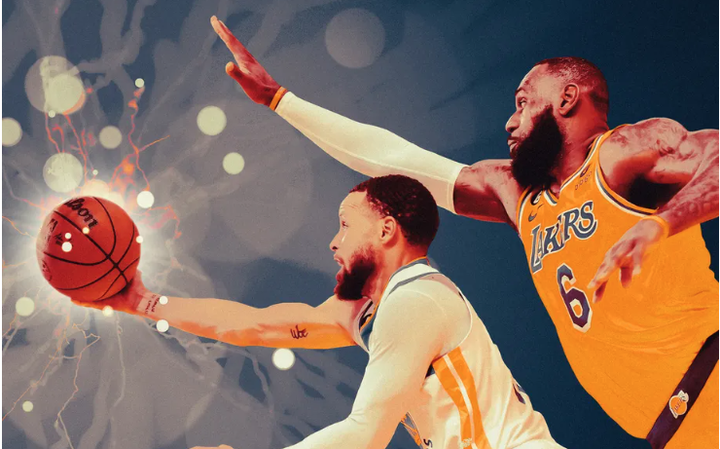The Lakers Must Change to Close Out the Warriors

Los Angeles needs only one win to advance, but running it back won’t get it done against Golden State. Here’s how the Lakers need to adapt in order to finish off the defending champs.
After five competitive, riveting, and plot-driven games between the Warriors and Lakers, we’re now at the precipice of a massive Game 6.
Golden State was trailing 3-1 earlier this week, but it figured a few things out in its Game 4 loss, which it carried over into Wednesday’s Game 5 win. Now, the pressure is on Los Angeles to tweak its game plan, up the intensity, and make enough shots to avoid a Game 7 back in San Francisco. The Lakers have to win only one game, but they may have a tough time doing so without a few strategic counters.
There are several tactical battles worth taking a long look at, but ever since Steve Kerr inserted Gary Payton II into his starting lineup before Game 4—giving Golden State another dynamic four-on-three playmaker, which JaMychal Green is not—this series has been dictated by the Steph Curry pick-and-roll, which is one of the most unstoppable actions in NBA history. Despite having Anthony Davis, Jarred Vanderbilt, and the best defense in these playoffs, the Lakers have had a hard time slowing the pick-and-rolls down.
In Game 5, Davis threw several different looks at Curry. He switched, dropped, and stayed up to touch. Almost none of it worked. The Lakers allowed 1.3 points per direct play when Davis defended a Curry ball screen. That number is a gaping hole in their hull. They probably won’t win the series if it holds.
The first time Davis switched onto Curry, Lonnie Walker IV came over to double, and the Warriors did what they do best: attack in space. As Curry got off the ball, Payton II scurried to the dunker spot and momentarily caught LeBron James’s attention, which led to an off-balance closeout that Andrew Wiggins took advantage of with a blow-by:
Davis started this play on Draymond Green, which did the Warriors a favor. It dragged AD into the action and out of the paint while also encouraging Curry to operate with his best pick-and-roll partner—as opposed to Payton II (who is capable but is not Green) or Wiggins. Getting a switch early in the possession also let Curry scamper around off the ball and forced Davis to chase him on the perimeter.
If the Lakers suddenly embrace a switch-everything scheme, everybody needs to be on the same page, locked in at the point of attack and aware on the weak side. Here’s Austin Reaves fighting over a screen while Davis switches it, opening up a lane so Wiggins can dive into the paint for a layup (Vando is late with his help and then plays the pass to Draymond instead of trying to stop the shot):
Another option: Assuming he’s good to go, the Lakers can look for Davis more, particularly when Golden State is small and Green is guarding him. (Putting Draymond in foul trouble is a sure path to victory.) The Lakers can run AD off wide pin-downs. They can establish him on the block with a cross screen. They can give it to him at the top of the key and invert a pick-and-roll. There are so many different ways for this guy to punish a defense that has no one-on-one answer for an entire game. A 23.8 usage rate doesn’t cut it.
The Lakers are sitting pretty, up 3-2 with an opportunity to win at home and reach the conference finals. But they’re also minus-four in the series, against a proud defending champion that’s found its footing and embraced a style of play that can carry it through the next two games. It feels silly to call closing out Golden State an uphill battle, but if the Lakers have the same lethargic approach to Game 6 as they did to Game 5—and if they let the Warriors dictate matchups and pace—that’s exactly what it will look like.